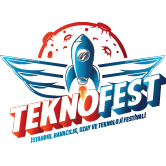The research article “Detecting High-Functioning Autism in Adults Using Eye Tracking and Machine Learning”, co-authored by METU members Dr. Şükrü Eraslan and Assoc. Prof. Yeliz Yeşilada has been published in IEEE Transactions on Neural Systems and Rehabilitation Engineering.
The purpose of this study is to test whether visual processing differences between adults with and without high-functioning autism captured through eye tracking can be used to detect autism. We record the eye movements of adult participants with and without autism while they look for information within web pages. We then use the recorded eye-tracking data to train machine learning classifiers to detect the condition. The data was collected as part of two separate studies involving a total of 71 unique participants (31 with autism and 40 control), which enabled the evaluation of the approach on two separate groups of participants, using different stimuli and tasks. We explore the effects of a number of gaze-based and other variables, showing that autism can be detected automatically with around 74% accuracy. These results confirm that eye-tracking data can be used for the automatic detection of high-functioning autism in adults and that visual processing differences between the two groups exist when processing web pages.
Yaneva, V., Ha, A. L., Eraslan, S., Yesilada, Y., & Mitkov, R. (2020). Detecting high-functioning autism in adults using eye tracking and machine learning. IEEE Transactions on Neural Systems and Rehabilitation Engineering, 28(6), 1254-1261. doi:10.1109/TNSRE.2020.2991675
Article access: https://ieeexplore.ieee.org/abstract/document/9082703
Dr. Şükrü Eraslan |
Web of Science/Publons Researcher ID: W-7666-2019 |
| seraslan@metu.edu.tr | Scopus Author ID: 55785840000 |
| About the author | ORCID: 0000-0002-9277-8375 |
Assoc. Prof. Yeliz Yeşilada |
|
| yyeliz@metu.edu.tr | Scopus Author ID: 8454176800 |
| About the author |
Tags/Keywords:
Autism, detection, diagnostic classification, eye tracking, screening, web
Other authors:
Yaneva, V., Ha, A. L., & Mitkov, R










